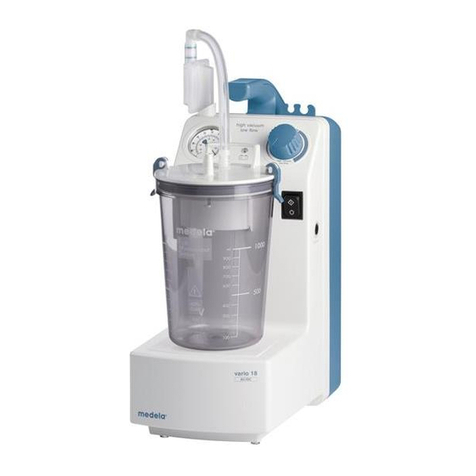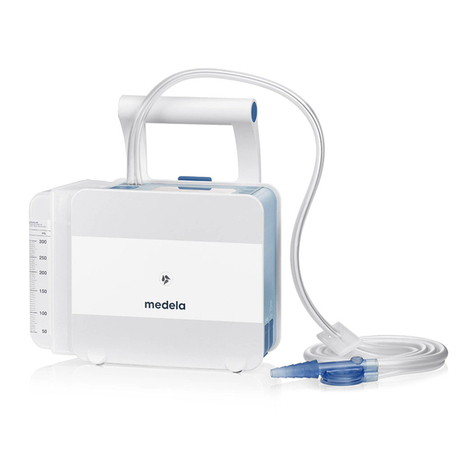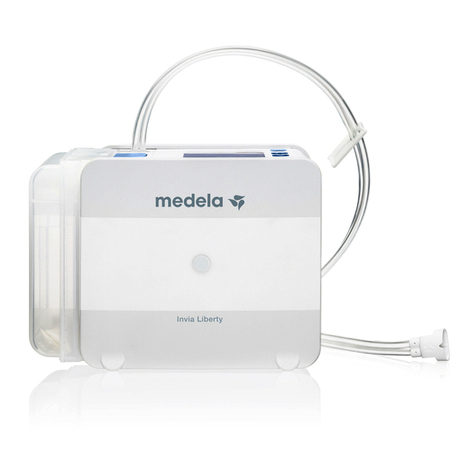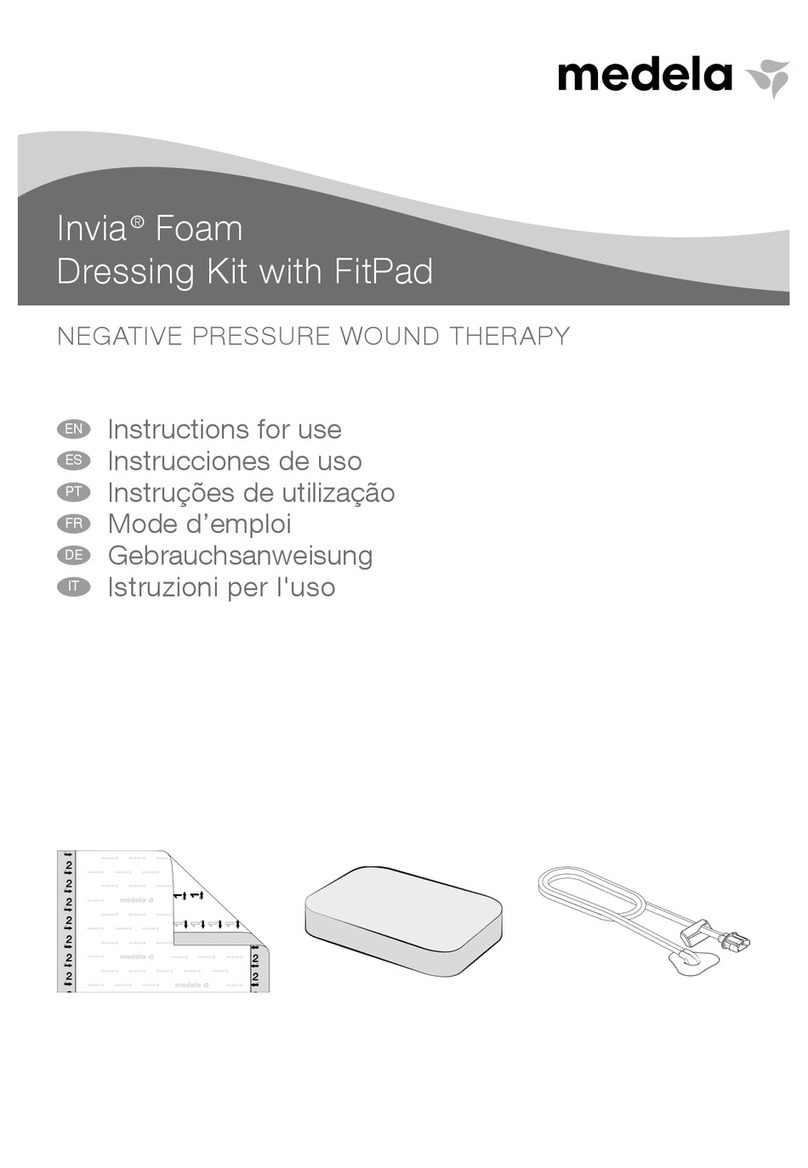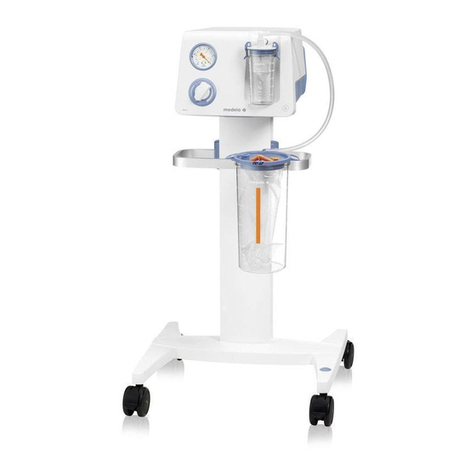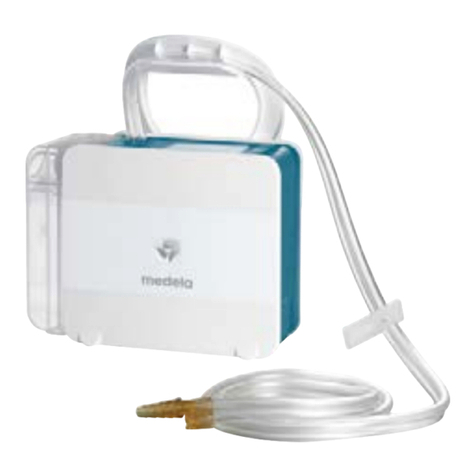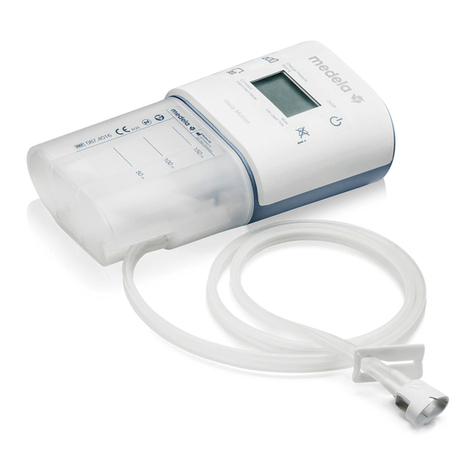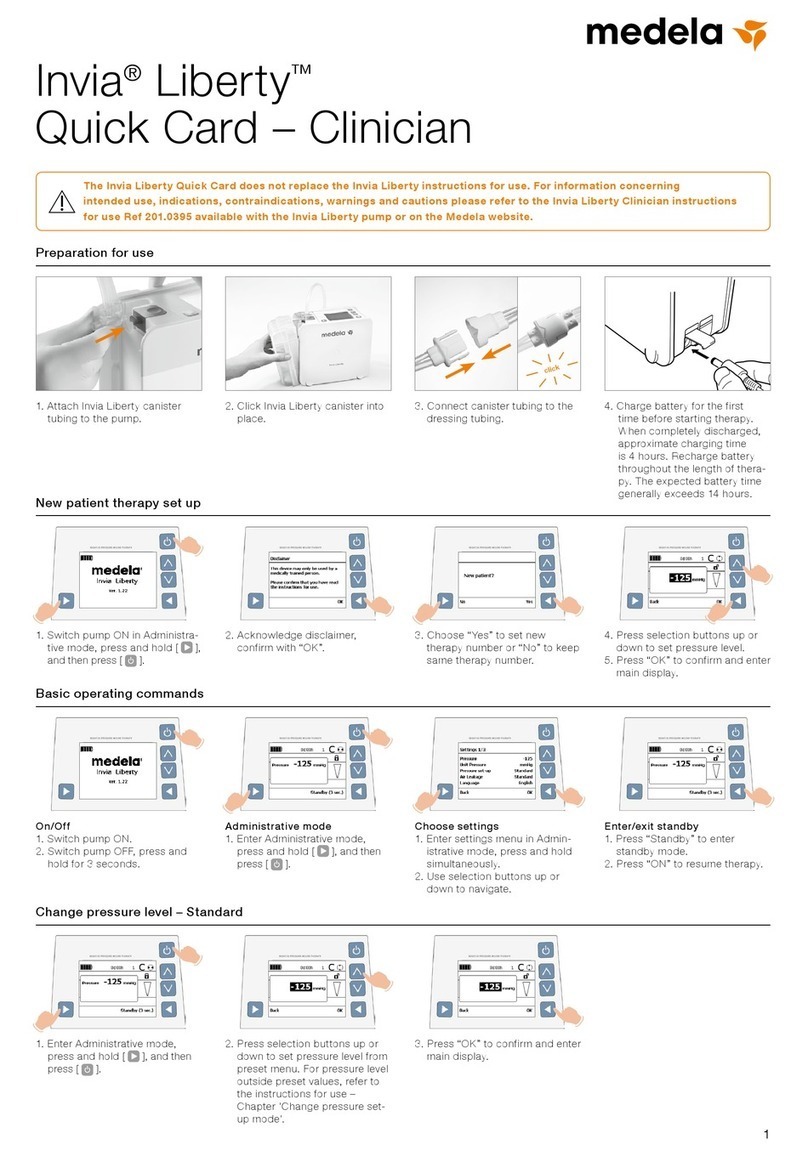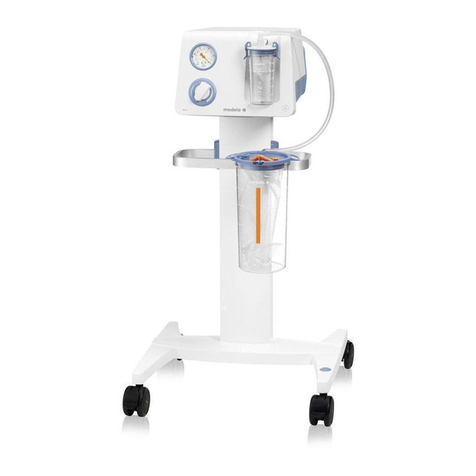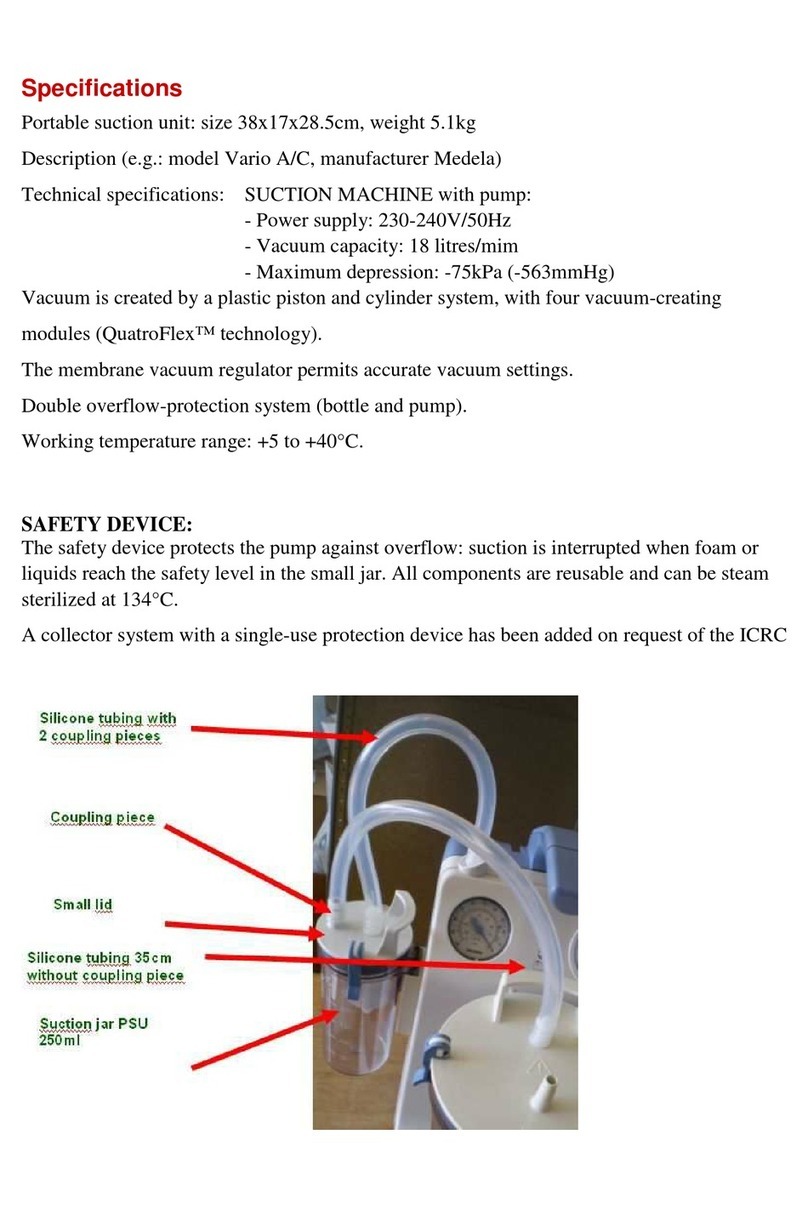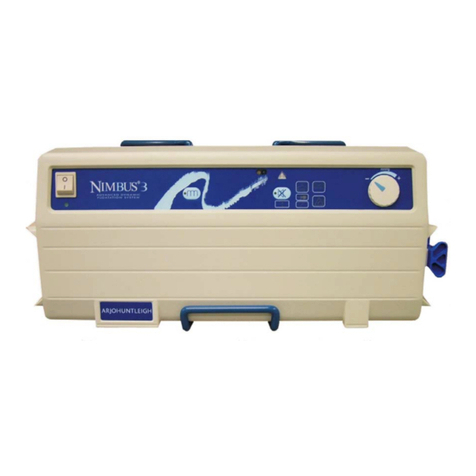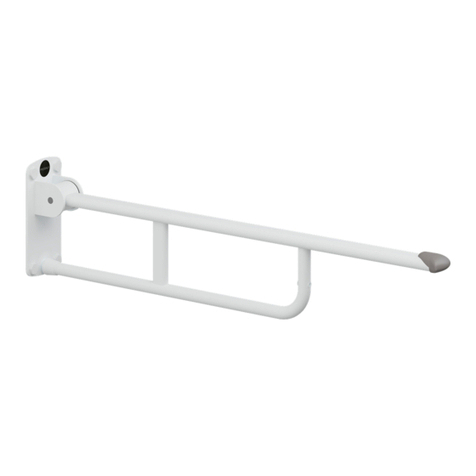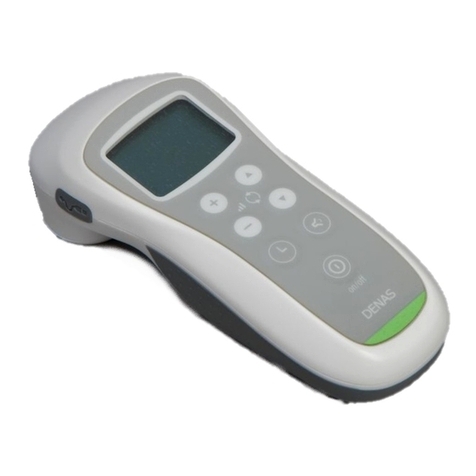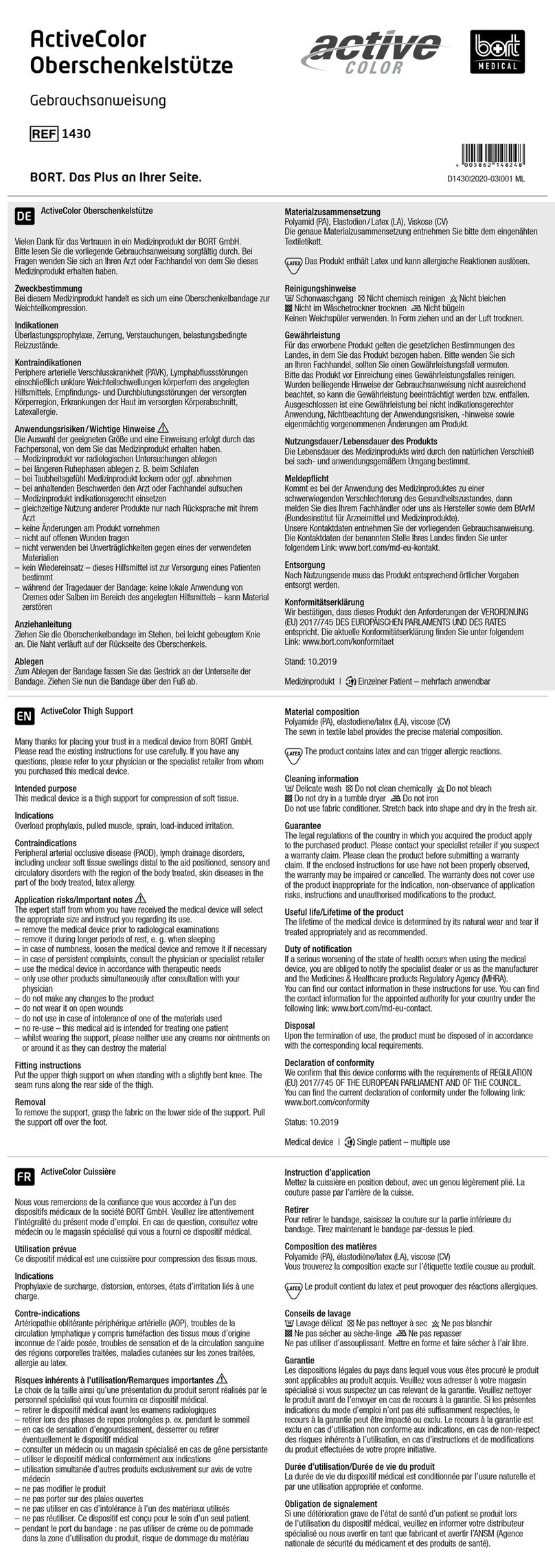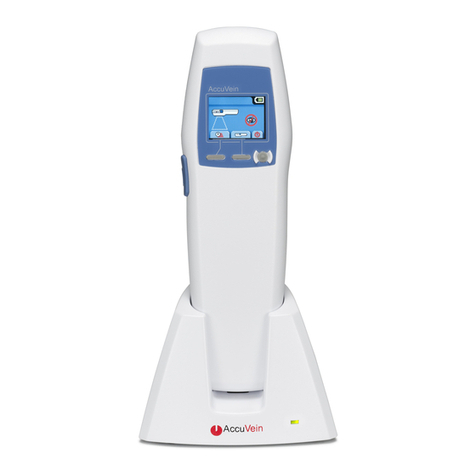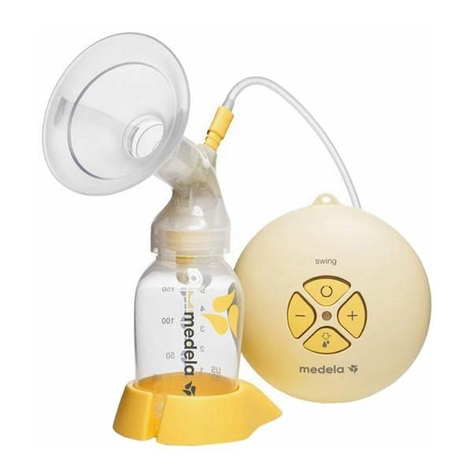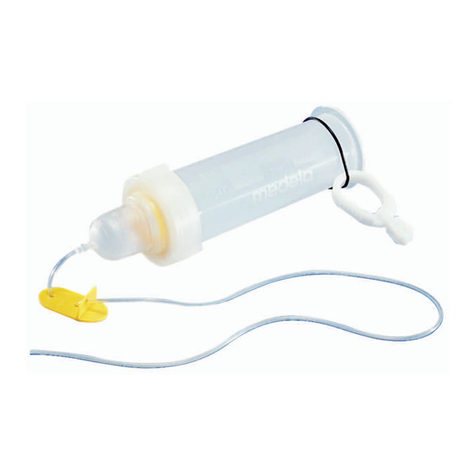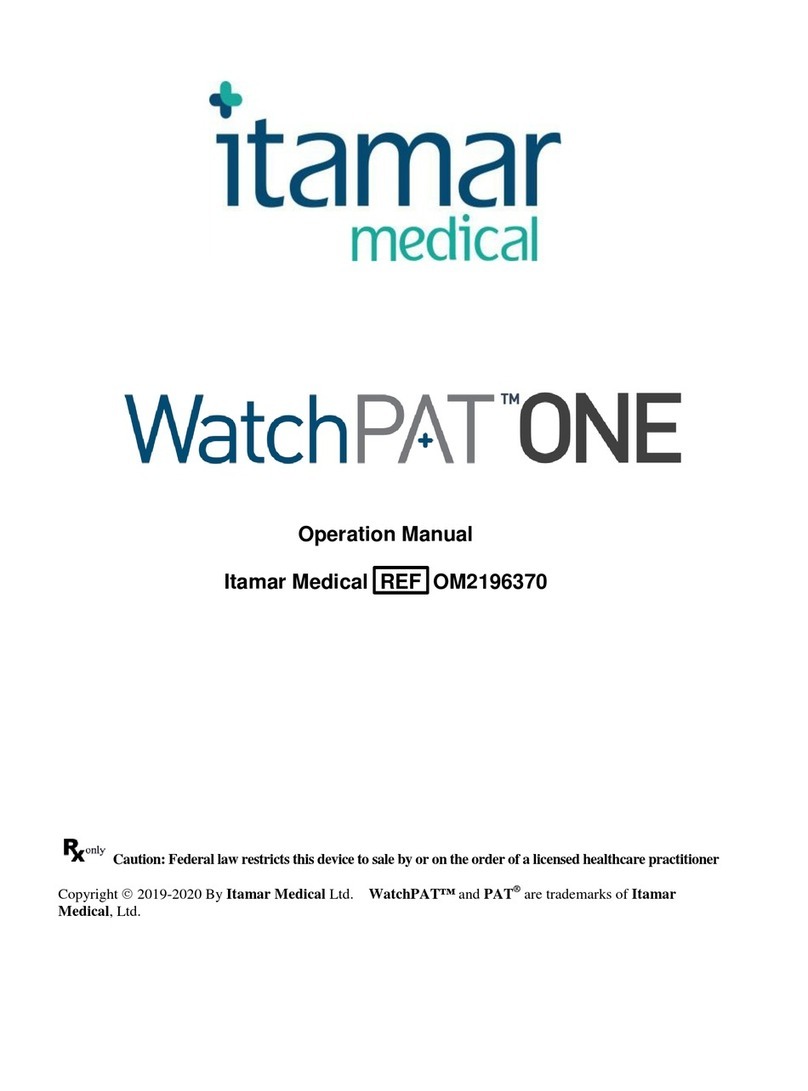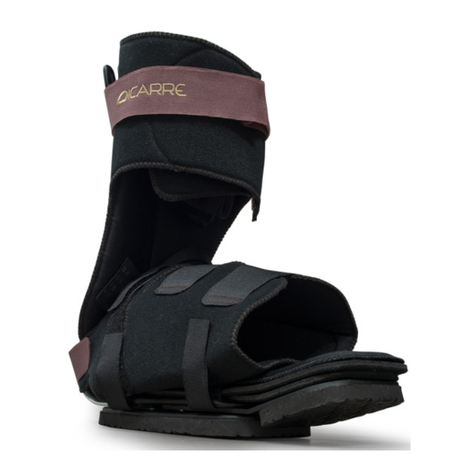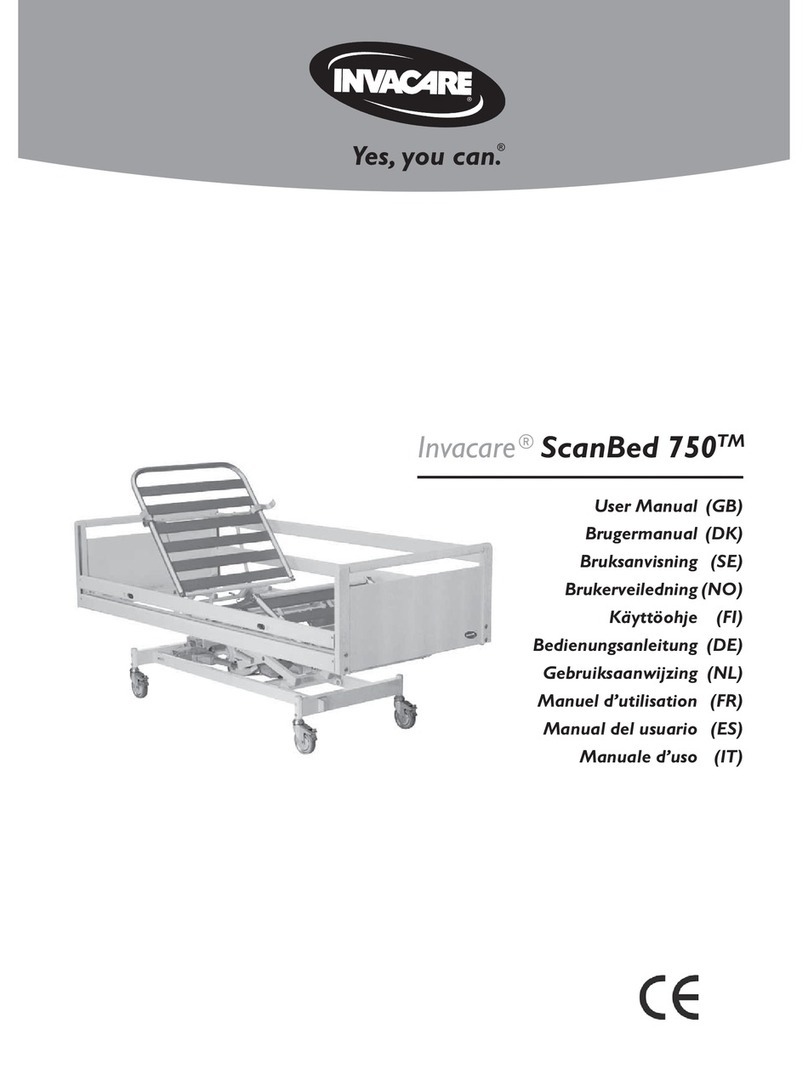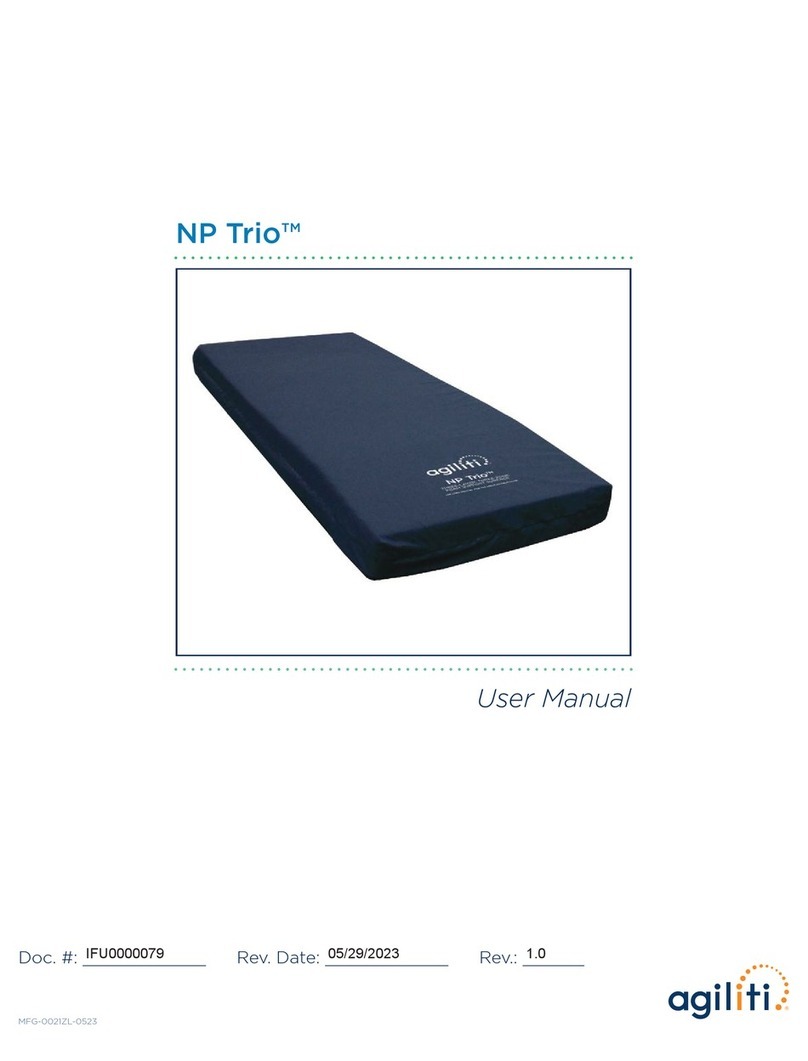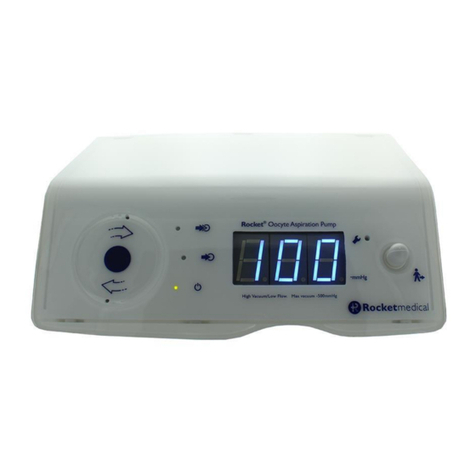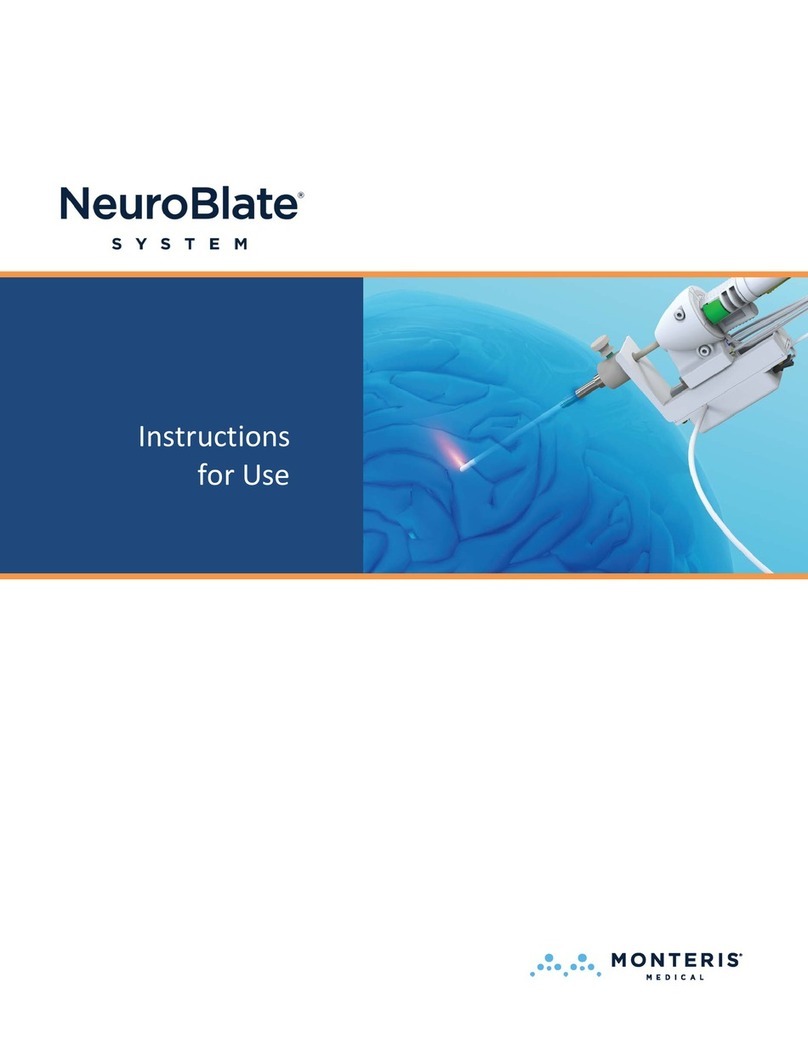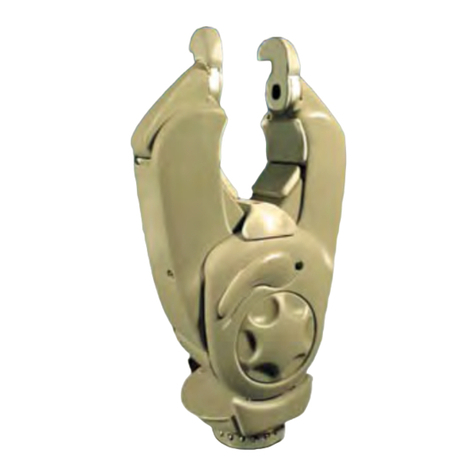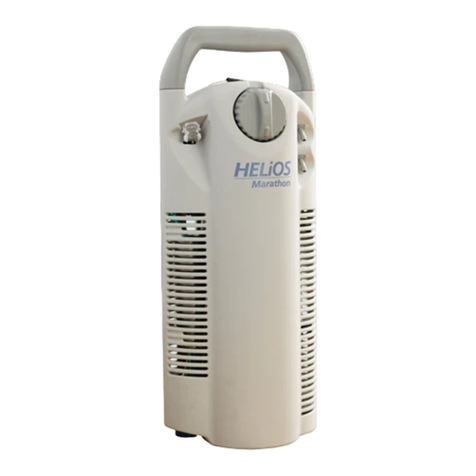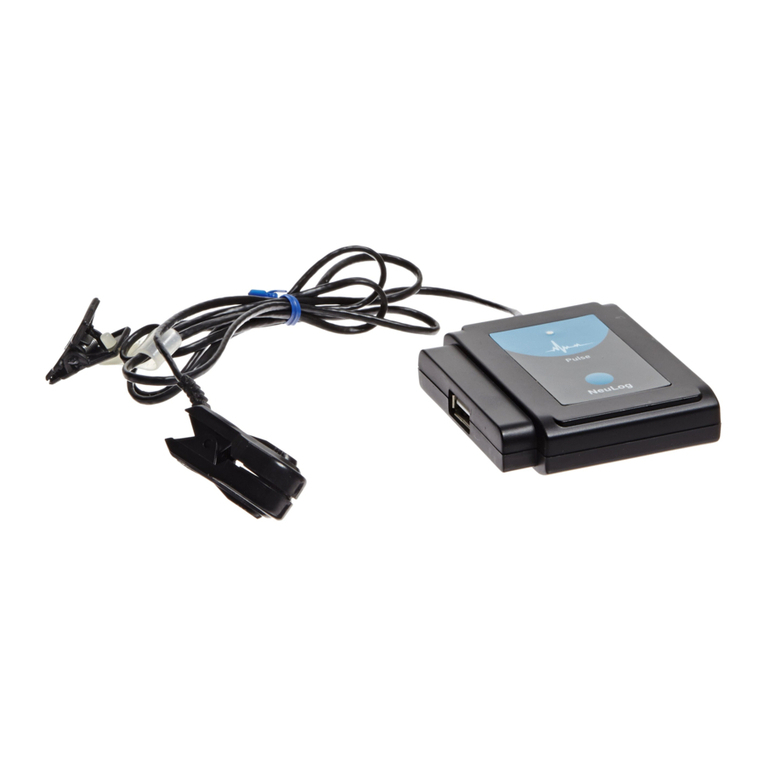
7EN
7.1 Measuring the irradiance
Measuring the light irradiance is not required as long as the light tube is changed every
1,500 hours. Should your facility require regular measurements a radiometer capable of
measuring fluorescent light in the 425 – 475nm light spectrum with intensity greater than
40µW/cm2/nm is required. The Olympic Medical Bili-Meter Model 22 with Type B-22
sensor is recommended.
Place the meter in the area of highest irradiation, as shown above in square 5. Move
the meter around this area to find the spot of highest irradiation. This is the only
required point at which a measurement needs to be taken. Once found, press down
slightly to simulate the weight of the baby on the bed and take a final reading. A
typical measurement will read between 40 – 60 µW/cm2/nm. When using a new
fluorescent tube it is expected to have a much higher reading. This is of no harm to
the baby and quickly plateaus to the typical range. Though a light tube with >1,500
hours of use may measure in the 40 – 60 µW/cm2/nm range it should still be
changed to maintain an optimal therapeutic affect.
8.1 Dressing the baby
• All of the baby’s clothes should be removed for maximum skin exposure to the
light. If a diaper is recommended, roll down the top of the diaper below baby‘s
naval so that the maximum amount of bare skin will be exposed to the
therapeutic light.
• Some other types of phototherapy equipment require infant eye patches. There
is no need to cover the baby‘s eyes when the BiliBed is used according to
instructions.
8.2 Putting the baby in the Bilicombi™ blanket
Note
The BiliBed ® is designed for use with the Medela Bilicombi therapy blanket only.
The Bilicombi keeps the baby warm and correctly positioned for effective photo-
therapy. The therapeutical effect of the BiliBed can only be guaranteed if the
Medela Bilicombi is used. The Bilicombi protects its surroundings from disturbing
blue light. When the Bilicombi is positioned incorrectly, leaking blue light may cause
nausea or headaches of blue-light sensitive nursing staff.
• Check the Bilicombi before each use. The light-permeable fabric must be without
damages and soft to the touch. The Velcro fasteners should guarantee a tight
attachment to the baby support. If this is not the case, replace with a new
Bilicombi.
• Attach the Bilicombi blanket to the baby support.
• Unzip the Washable Bilicombi blanket or unfasten the Velcro® on the jacket of
the Disposable Bilicombi.
• Always lay the baby on his/her back in the Bilicombi blanket unless the
physician tells you otherwise.
• You should talk to the doctor about which sleeping position is best for the new
baby. There are certain health conditions that might require tummy-down sleeping
positions. If the baby was born with a birth defect, was born pre-term, frequently
spits up after eating or has breathing, lung or heart problems, be sure to talk to
the doctor about which sleeping position to use.
• Put the baby‘s arms into the sleeves of the Bilicombi blanket.
• Zip/Fasten Velcro on the Bilicombi blanket. Close the Velcro fastener under the
baby‘s chin.
Providing phototherapyVIII
